New foundation bed, sedge lawn update, and fall color
The front garden by the house has undergone some major changes since we lost a tree last winter. But after some summer angst as formerly shaded foundation shrubs burned up, and some fixes, I’m feeling good about it again.
Here’s how it looked before, with the live oak before removal.
And here’s the stump and empty swath of lawn — the only lawn that was left in our entire yard — right after the tree came down. It happened in December, and I immediately started worrying about the Japanese maple and foundation shrubs, which would now receive a lot more sun in summer, although the north-facing house does give them some protection. I also knew that last bit of lawn had to go. I’d only kept it because it was chock-full of oak sprouts, which are easier to mow than remove by hand from a planting bed, and I hoped that once we ground out the stump, the sprouts would wither away (sadly that has not been the case).
So out came the lawn and the semicircle of metal edging that had kept it tidy. I laid a natural (not chopped) limestone edge to keep soil and mulch out of the dry stream behind it.
In February I planted rows of 4-inch ‘Scott’s Turf’ sedge (Carex sp.) from Barton Springs Nursery and a toothless sotol (Dasylirion longissimum) slightly off-center. The sedges looked so tiny!
But 7 months later, the sedge is fluffy and full — not all the way filled in yet, but close. You’ll notice one more change: the foundation bed has been replanted. That just happened. As I’d feared, the shade-loving Chinese mahonias and holly fern that had long occupied the foundation bed burned up under the Death Star’s rays.
Good riddance to the holly fern. I’d hated it. I regretted losing the Chinese mahonias, but I have others. I replaced them with two dwarf Texas palmettos (Sabal minor), as large as I could afford because they’re so slow-growing. I also shifted into more shade an ‘Everillo’ carex that was showing sun stress. Between the palmettos, for height, I placed a tall, narrow pot just outside the drip line of the eave with a ‘Pineapple Express’ mangave and silver ponyfoot. The mangave is a little too small — something with more heft would look better, like ‘Macho Mocha’ mangave — but I really wanted to try this one.
Side view
The combo of ‘Sparkler’ sedge, ‘Soft Caress’ mahonia, and ‘Everillo’ sedge by the front porch stayed pretty shady all summer thanks to the porch roof, so I was able to preserve it.
Happily, the Japanese maple at the far end came through the summer with only a little curling of its leaves by August. It’s getting a half day of morning sun now, but the other trees shade it from the afternoon sun, thank goodness.
On the sunnier side of the porch, these dry-garden plants thrive with only occasional hand-watering: toothless sotol (Dasylirion longissimum) in the tall pipe, red yucca (Hesperaloe parviflora) in the red planter, Agave ovatifolia ‘Vanzie’ on the left, dwarf myrtle (Myrtus communis ‘Nana’), and ‘Frazzle Dazzle’ dyckia (Dyckia choristaminea ‘Frazzle Dazzle’) in the small steel planter.
After the two quick deep freezes last winter, it look a long time for the normally evergreen flax lily (Dianella tasmanica ‘Variegata’) to recover, but by midsummer it was looking good again. I like how the stepping-stone path seems to cut through a swath of it — the eye reads it as one mass.
The surviving Chinese mahonia are growing in a loose hedge along the fence.
Farther out along the driveway, there’s white skullcap, bamboo muhly, and ‘Burgundy Ice’ dyckia.
And beyond that are new ‘Micron’ dwarf yaupon holly (Ilex vomitoria ‘Micron’) and foxtail fern (Asparagus meyeri), plus Texas sotol (Dasylirion texana), gopher plant (Euphorbia rigida), spineless prickly pear, and golden thryallis (Galphimia gracilis).
Peeking around from my neighbors’ vantage point, there’s purple fountain grass (Pennisetum setaceum ‘Rubrum’) mixed in with the golden thryallis, plus gray globemallow (Sphaeralcea incana) starting to bloom.
By the street, crouching low — because this is a small plant — you see purple skullcap (Scutellaria wrightii), a super performer in a hot, sunny, gravelly site often visited by passing dogs. Not a browned spot is visible anywhere on it. Those are ‘Color Guard’ yuccas in the background.
The big ‘Green Goblet’ agave in the terraced bed on the other side of the driveway is doing well. Woolly stemodia (Stemodia lanata) carpets the ground beneath it.
Ruffled, fuzzy mullein is a silver accent.
My other sedge “lawn,” this one planted with ‘Berkeley’ sedge (Carex divulsa), is looking OK although not as fluffy as I would like.
Maybe it would be happier with more sun. At any rate, it does remain green with little maintenance. That’s a wide-leaf giant hesperaloe (Hesperaloe funifera ssp. chiangii) and white Turk’s cap (Malvaviscus arboreus var. drummondii ‘Alba’) on the right.
I’m always pretending the neighbors’ plantings are mine (I did plant them for them). Here’s lantana with a little Turk’s cap that self-seeded and Mexican bush sage (Salvia leucantha) in fall bloom.
The side path to the heart gate is quieter with masses of two grasses: inland sea oats (Chasmanthium latifolium) and bamboo muhly (Muhlenbergia dumosa). On the cedar table…
…is a galvanized cake stand I punched a few drainage holes in, which holds some silver balls, stone hearts, a shell fossil, my friend Dustin’s cast-stone diamond, and pine cones.
Wow, the Mediterranean fan palm (Chamaerops humilis) has really grown this year. I do nothing with this — ever. So easy!
On the back deck, my little Moby Jrs are growing too.
It’s so much easier to enjoy the garden in fall — and maybe soon we’ll have actual fall temperatures along with the recent welcome rains. Come on, October!
I welcome your comments; please scroll to the end of this post to leave one. If you’re reading this in a subscription email, click here to visit Digging and find the comment box at the end of each post.
_______________________
Digging Deeper: News and Upcoming Events
Get ready for fall garden tours in Texas! The Garden Conservancy is sponsoring Open Days tours in Fort Worth on Oct. 8th, San Antonio on Oct. 14th, and Austin on Nov. 4th.
Get on the mailing list for Garden Spark Talks. Inspired by the idea of house concerts, I’m hosting a series of garden talks by talented designers and authors out of my home. Talks are limited-attendance events and generally sell out within just a few days, so join the Garden Spark email list for early notifications. Simply click this link and ask to be added.
All material © 2006-2017 by Pam Penick for Digging. Unauthorized reproduction prohibited.


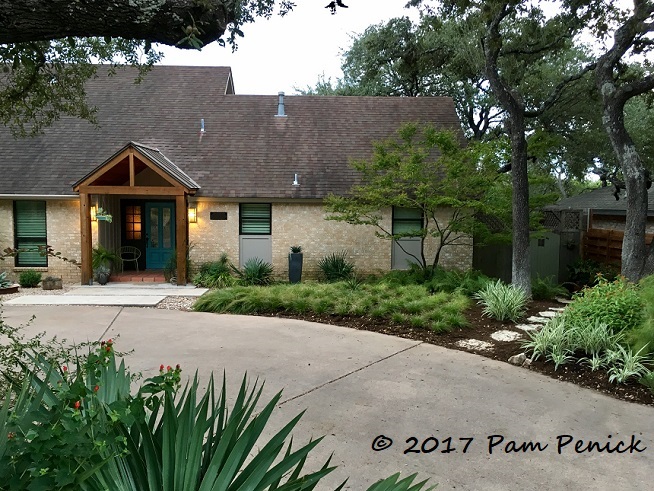
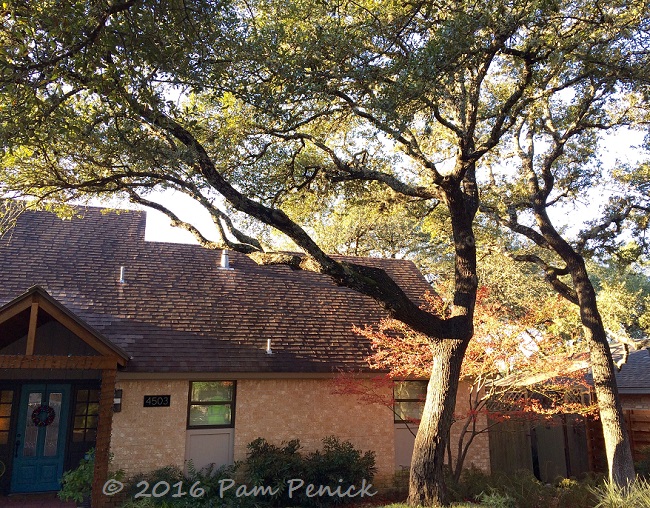
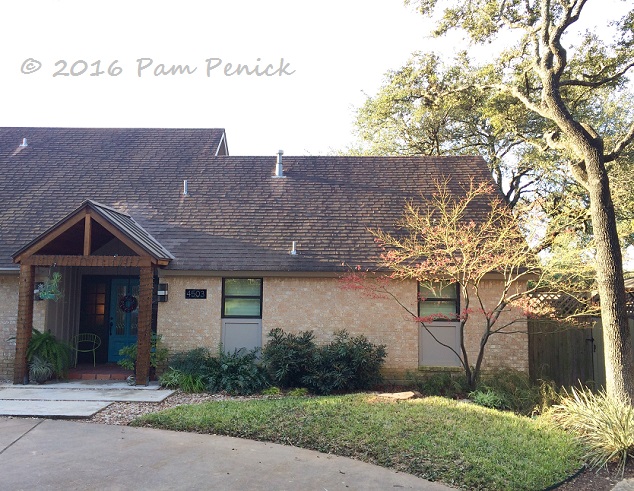
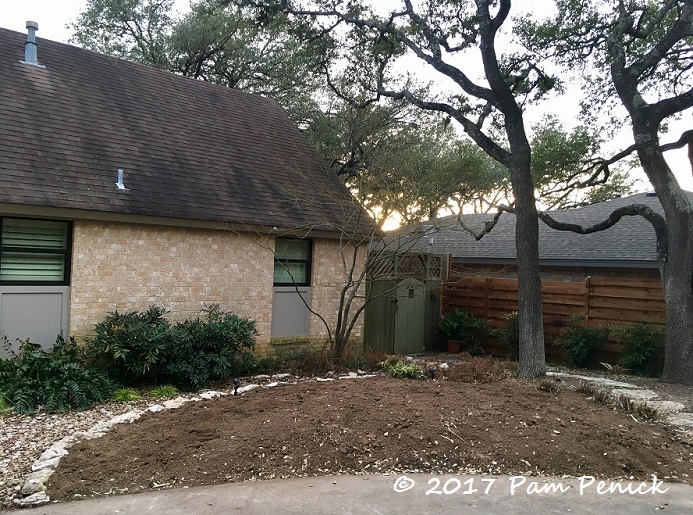
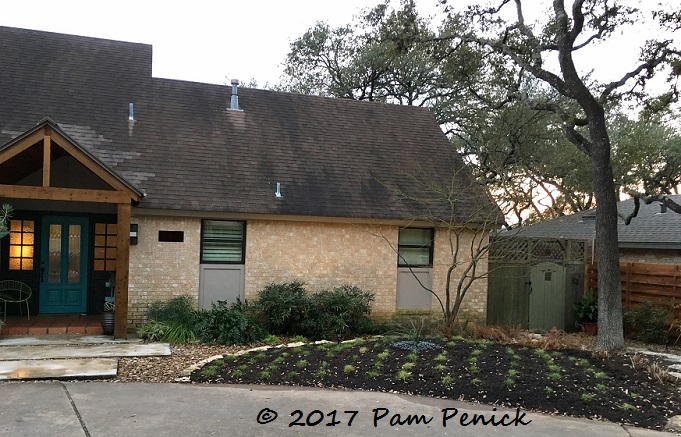
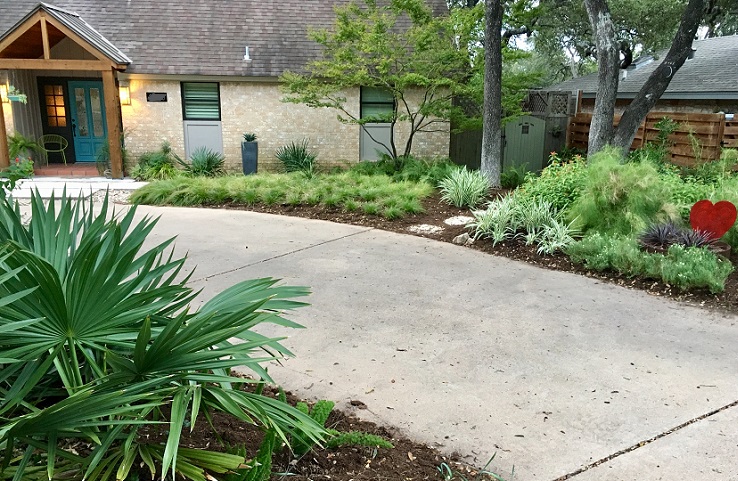
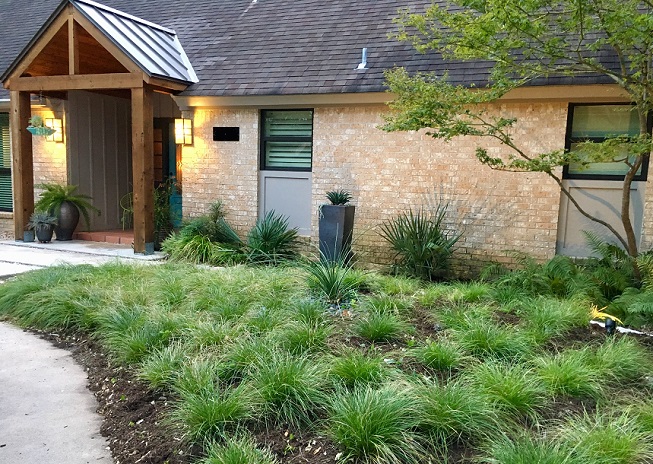
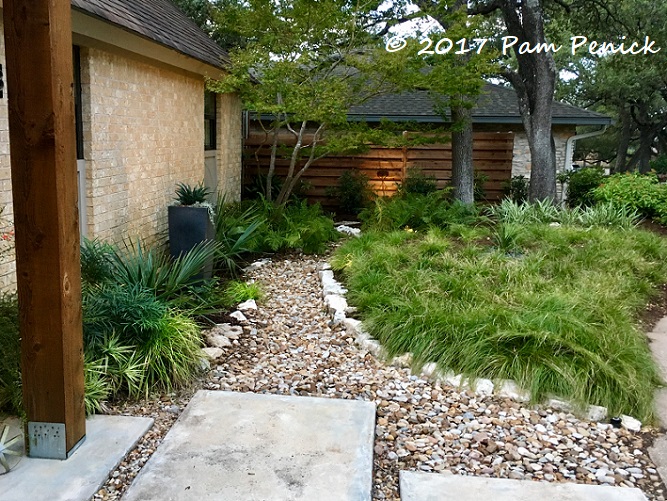
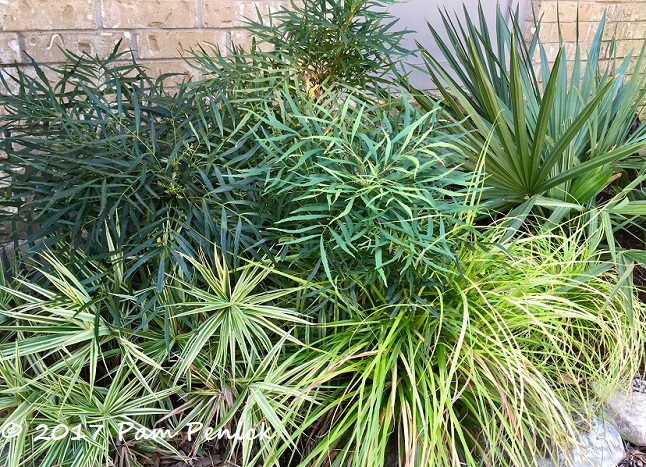
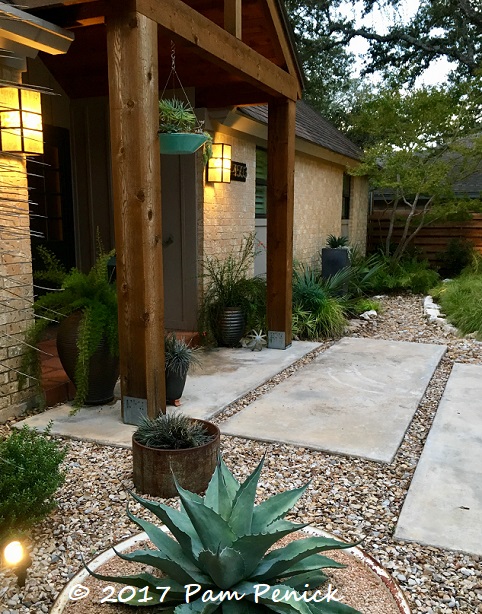
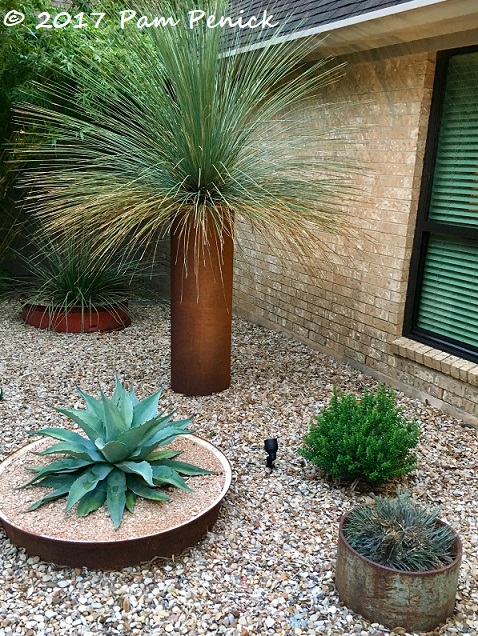
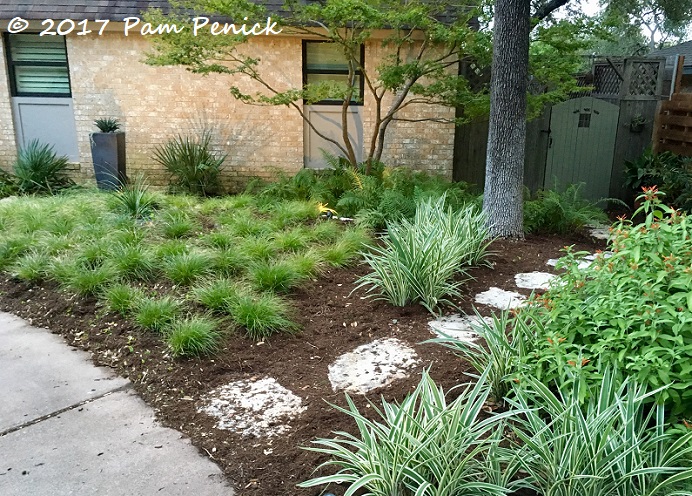
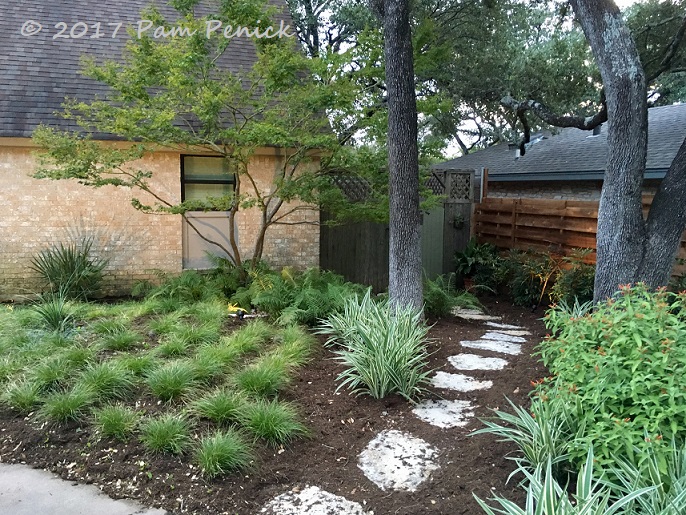
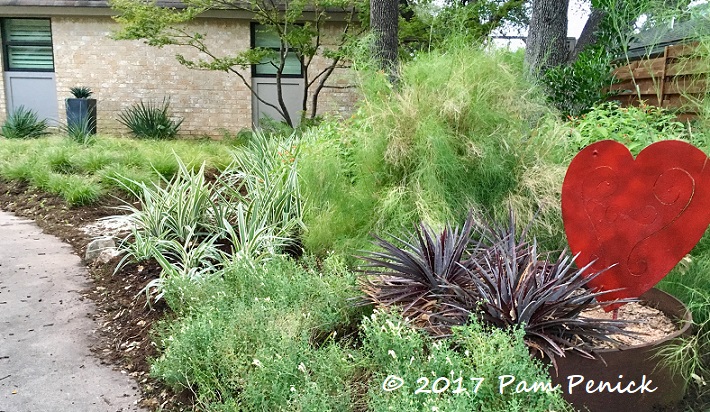
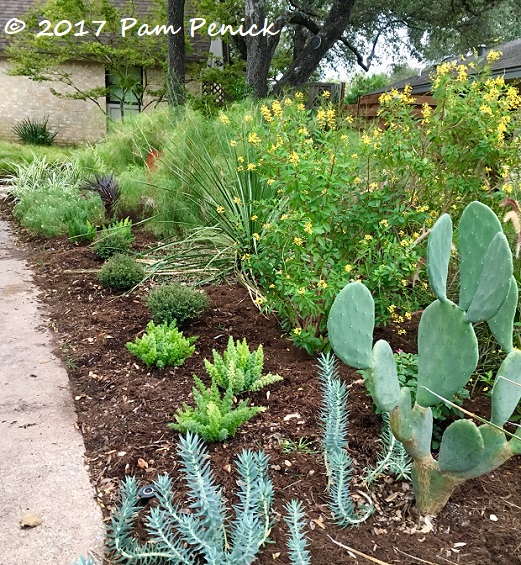
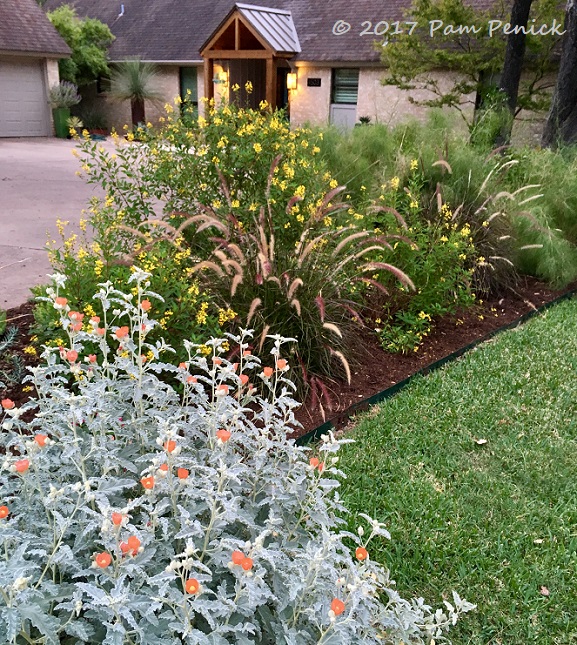
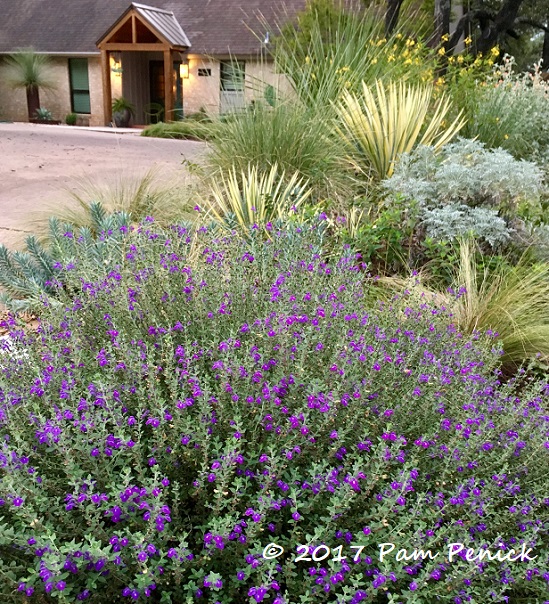
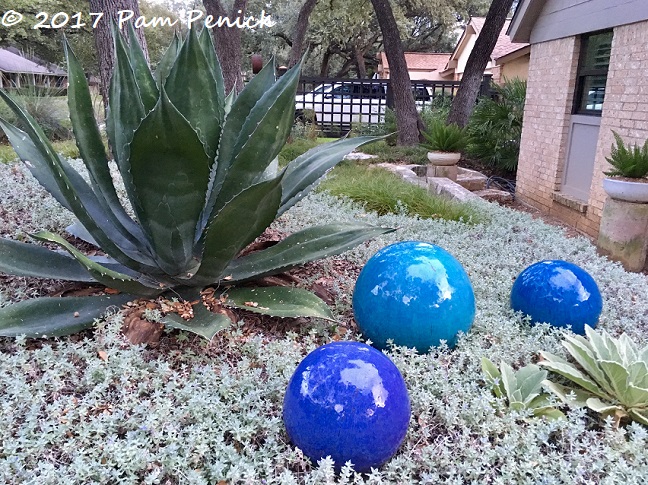
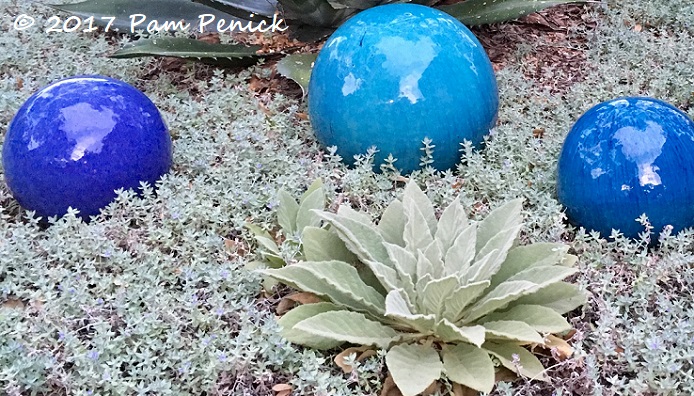
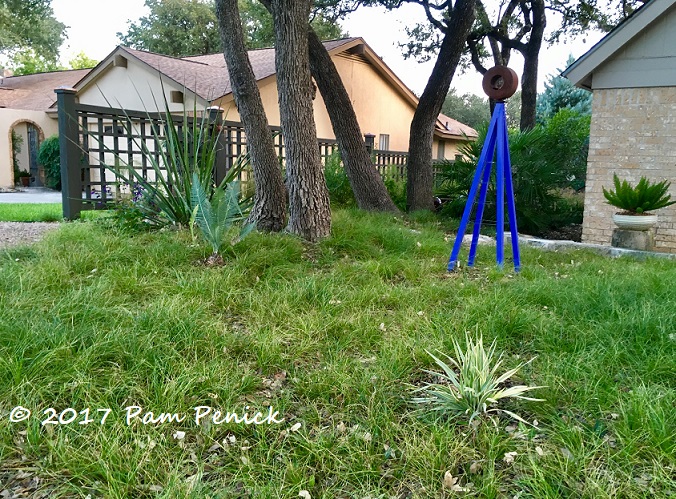
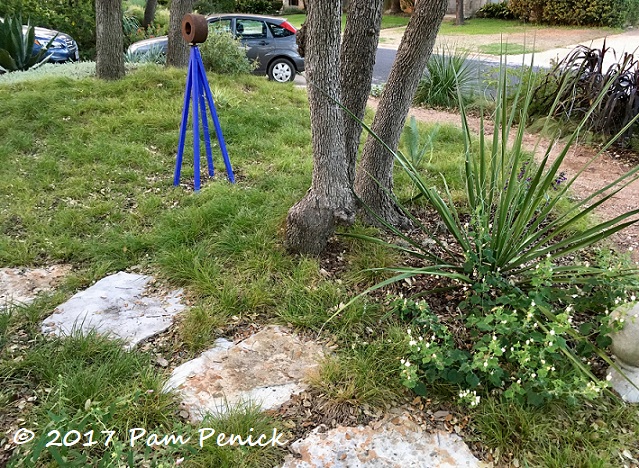
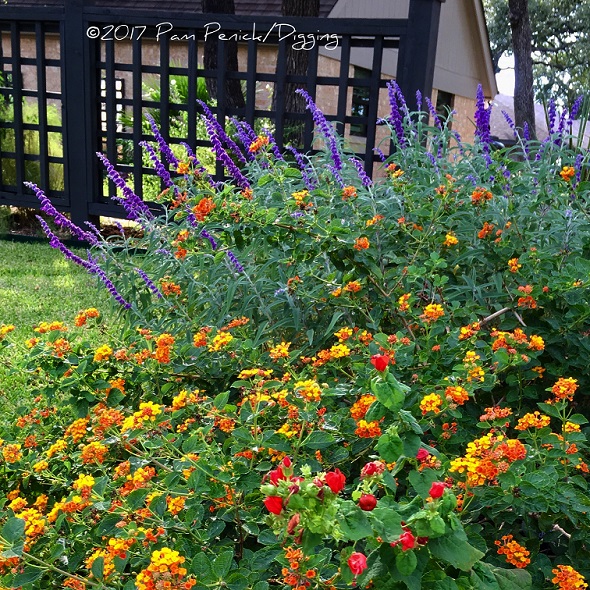
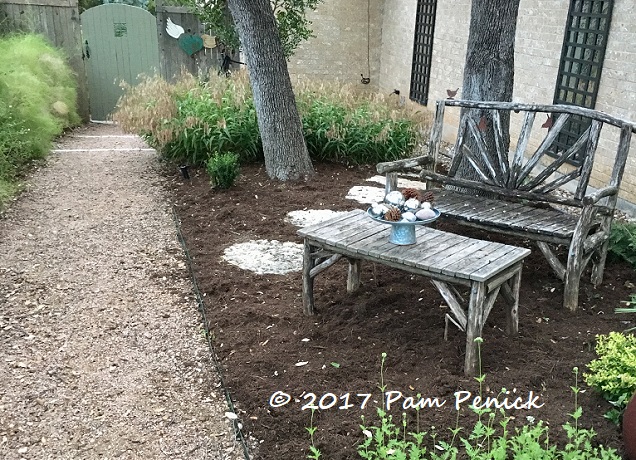
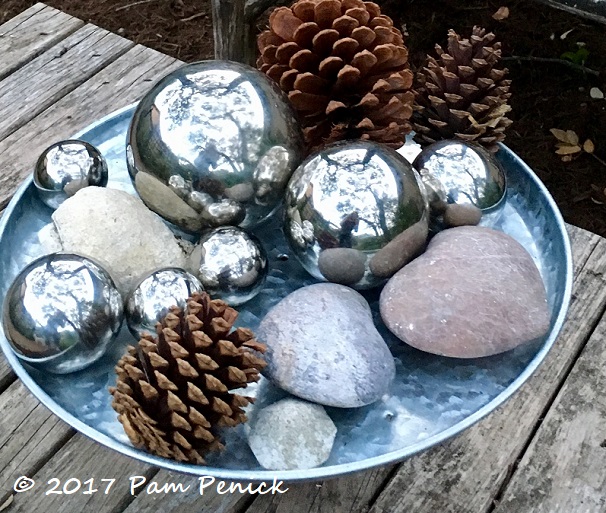
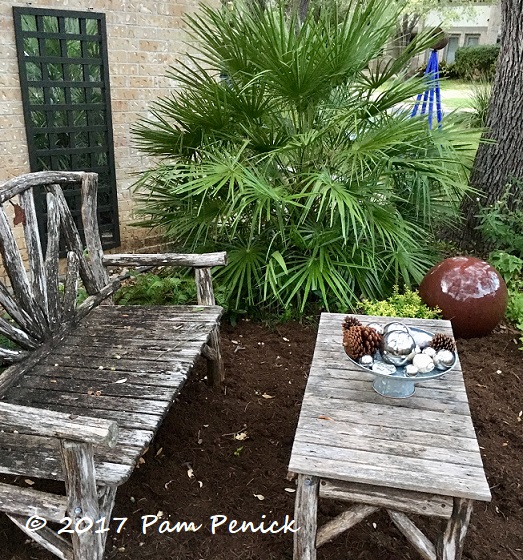
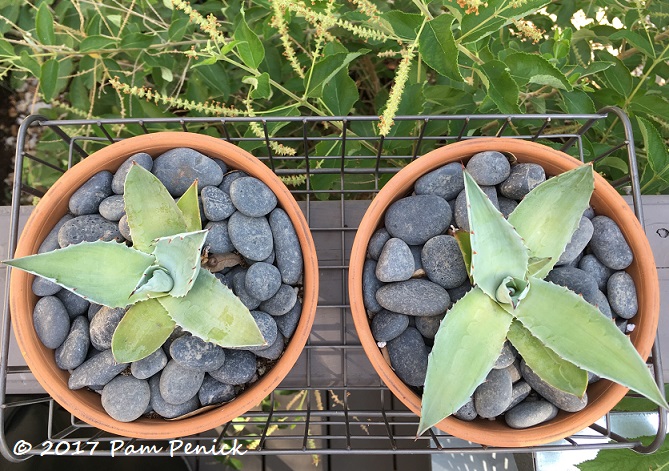
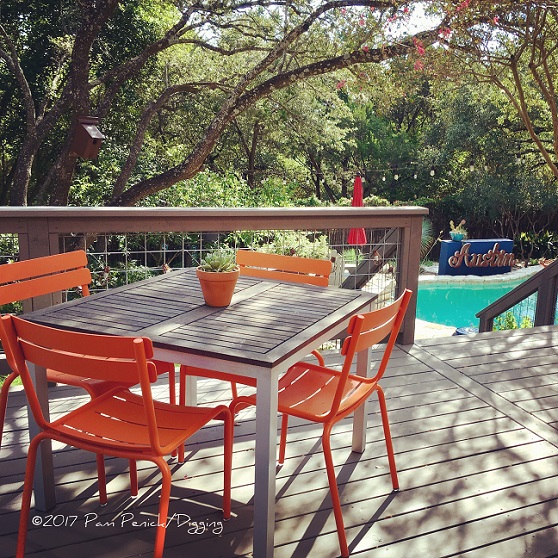
The new sedge lawn is looking fabulous. Is this an area where you used to get oak sprouts? Do they still come since the tree was removed? And the newly replaced planting is very attractive against the brick. Sometimes good things come from a loss. The skullcap, despite, doggy visits, is beautiful.
I still get the oak sprouts, unfortunately, and I have to hand pull those. —Pam
Pam,
This looks absolutely gorgeous! I think I’m going to try the Scott’s Turf Sedge here at our new place in Mt. Bonnell Shores. My front yard here is very much like the yard on Mountain Path in that there is low light by the house, then hot spots here and there. And too much St. Augustine! I’m going to keep this post for reference as I slowly redo.
I find the Scott’s Turf sedge to be a workhorse, Gina. It does need to be mowed about once a year, after it blooms in spring, to look its best, just fyi. —Pam
Change is often difficult but you have really pulled it off. It looks great! I like the sedge lawns. You are now totally no mow : ) Enjoy autumn in your garden!
Except for once-a-year mowing of the sedge (see my reply to Gina, above), YES! —Pam
Looks great! Thanks for the post and letting us know about good plants to try in different conditions in the yard and about how your landscaping evolved after the tree was removed.
You are welcome, Clare. Thanks for reading! —Pam
Those changes flow well with the rest of your garden. I am a huge fan of those cute Micron yaupon hollies.
Good to see Scott’s Turf performing so well especially since I picked up a flat of it at BSN during my last visit to Austin in late August. I also like Webberville Sedge a lot but can’t seem to find enough of it.
I hear good things about Webberville too, Shirley. I think Scott Ogden (for whom ‘Scott’s Turf’ is named) mentioned it at my first Garden Spark event. —Pam
You know how I love me a nice sedge! That is a beautiful sedge and the whole redesign is as well-thought-out as I would expexct from you. Plus I am always envious of those things you can grow that I can’t but I don’t really want to swap climates!
Understandable, Linda. And I think I feel the same way — ha! —Pam
It looks SO GOOD. I love it! I can’t wait to see it in person next year.
Do your sedge “lawns” take foot traffic at all? I’m looking for a lawn alternative for our backyard. It’s a small area, but Dymondia margaretae has been a big disappointment.
Only very light foot traffic, if at all, Gerhard. It would not hold up to regular walking, so just run a stepping-stone path through it. —Pam
The new foundation bed looks great, as does everything else, Pam! I’m glad to hear your Japanese maple survived the loss of the oak. In fact, it looks as though it stands out more now that the oak is gone.
I think so too, Kris. It’s more in scale with the house, and now that the big live oaks are off to the side, you can really appreciate the little maple. —Pam
The garden is looking beautiful. Everything has filled in so nicely.
Thanks, Laura! —Pam
Your revamped front lawn looks so much more like you. It is great. My Mobys are looking good this summer too. I love those ceramic balls in the grey ground cover. I might have to place mine out in the silver ponyfoot if it survives this next winter.
I’m glad your little Mobyettes are doing well, Lisa. I guess Indiana agrees with them! —Pam
This is a big improvement, Pam. As the dwarf palmettos grow bigger, it will balance out and be fabulous!
I know you love palms, Peter, so I’m not surprised to hear you approve of the changes. But thanks! —Pam
looks really sharp! great before, greater now…as for those cursed oak sprouts, a pox on each & every one!
(see you on the 14th, which I hope will be a cool, breezy beautiful day with nary a mosquito in sight!)
From your lips to the weather gods’ ears, Linda, but I shall be there regardless. Wouldn’t miss it. and I know your garden will be the highlight of the San Antonio Open Days tour. —Pam
Splendid Pam ! And I am always happy to hear another gardener admit they hate a plant. I still have a couple in my garden that I am determined to get rid of. One planted by a previous homeowner (30+years ago) and one unfortunately planted by me.
Just rip ’em out, KS! I’m wishing I’d done it ages ago with that holly fern, poor thing. —Pam
The “new” front planting area looks grand, and I hope your ‘Pineapple Express’ Mangave quickly grows to the size you desire. Can’t believe I’m finally going to get to see your garden next year!!!
I am looking forward to seeing you here in Austin, Loree — at long last! —Pam
The updates look fantastic!!
Thank you, Jeff! —Pam
It really looks good, Pam. I love the orange chairs on your deck. A nice counterpoint to the blues! I’ve really come to appreciate orange in a hot garden.
Me too, Gail. Loree/Danger Garden has shown me the way on orange. —Pam
Every time I think it’s perfect, your gardens get even more beautiful and interesting. Thanks for the armchair tour!
Aw, thank you, Sherry! —Pam
Your garden is so beautifully balanced…I wish I had your restraint :).
I often wish I had more restraint — ha! But thank you, Holly. 🙂 —Pam
Hi Pam, Such luscious growth plantings. Love the color of your flowering plants. For the purple skullcap and gray globemallow (mine died), what soil were they planted in or amendments have you used to keep them so lush and healthy? I’ve seen gray globemallow doing really well in professionally planted beds, so I think I missed something…
Those two need good drainage, Beverly. My soil is not especially heavy, and if I dig deep enough I hit caliche — in other words, I have fairly decent soil for the Austin area, neither heavy clay nor a thin layer over rock. Even so, after clearing out the turf, I usually add about two inches of a compost mix with lots of decomposed granite blended in to give the new plants better drainage and extra fertility. Once upon a time, I used the Natural Gardener’s Hill Country Soil, but they no longer sell it in bulk. For the new sedge planting I used Lightening Mix from Advanced Organic Materials in Buda and have been happy with it. —Pam